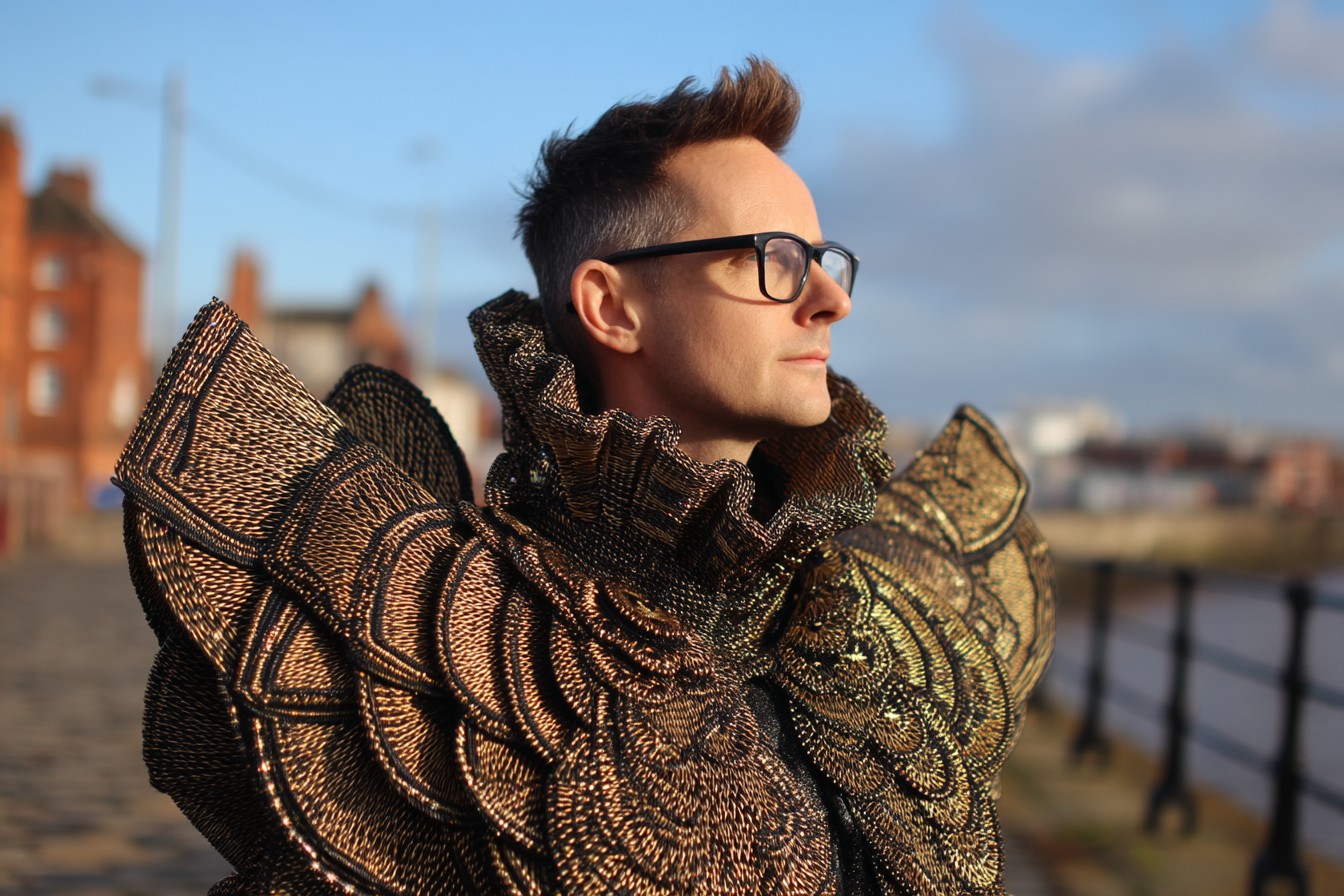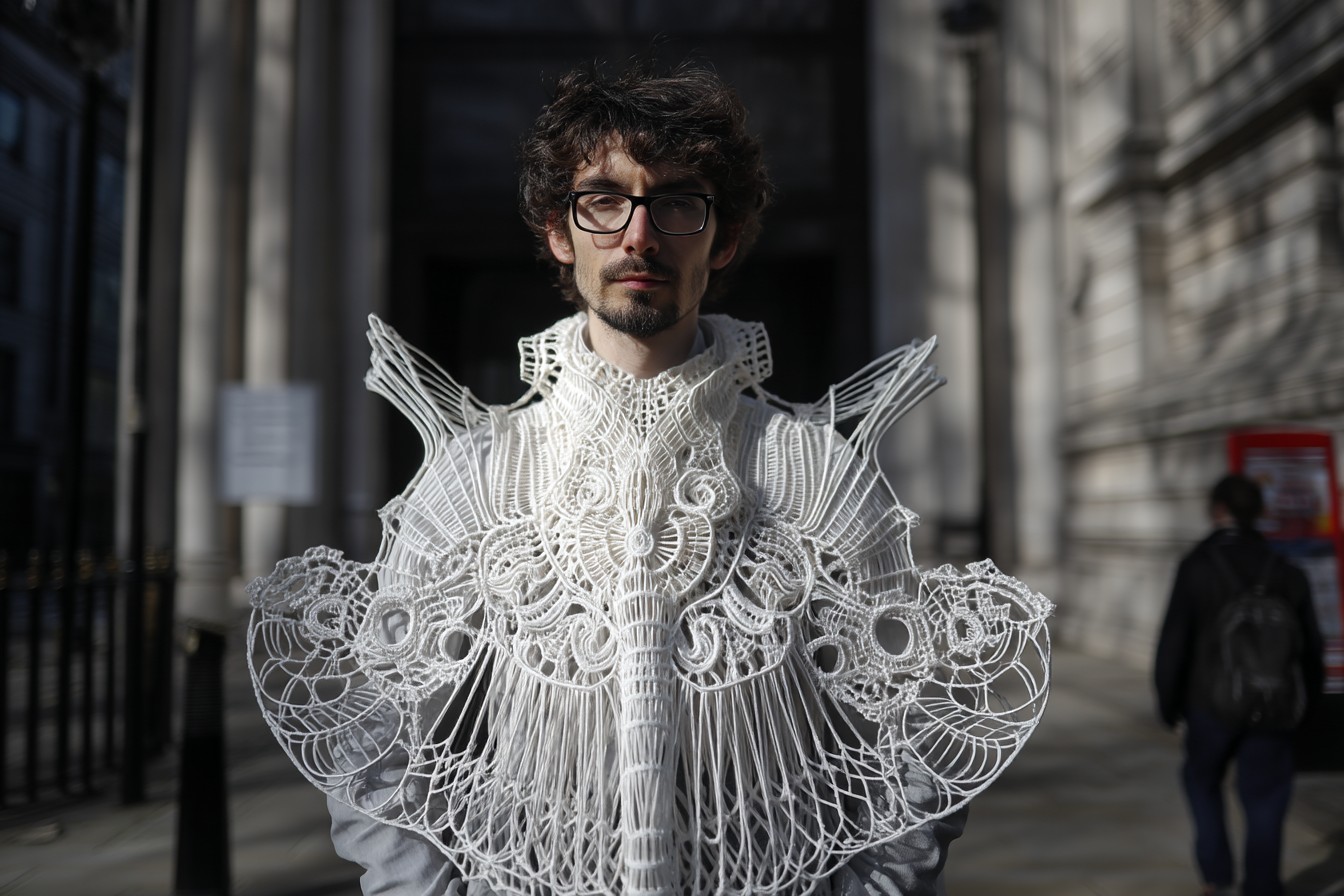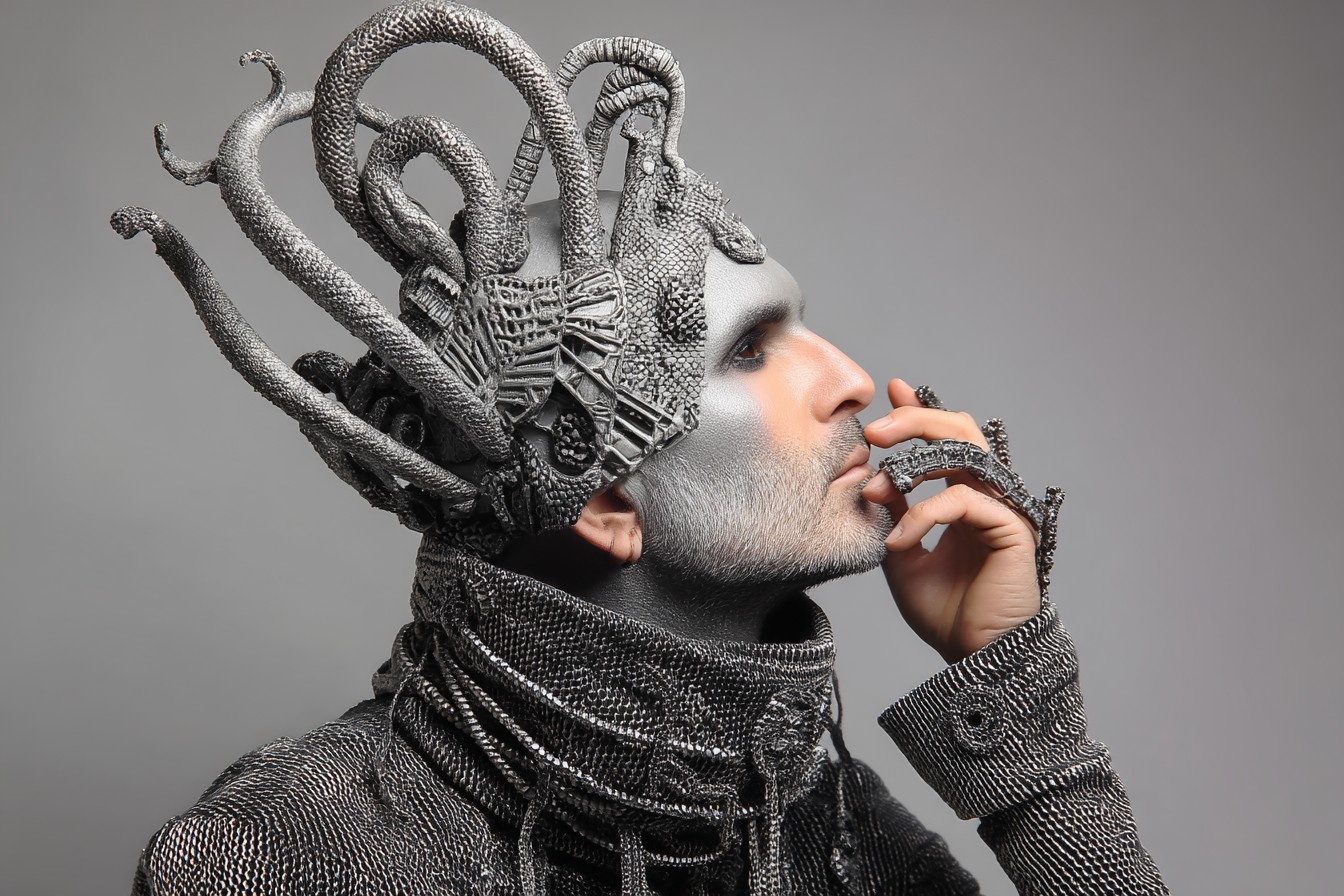It started with a dare, if I’m being completely honest. Saturday night, third pint in, Marcus scrolling through his phone showing us all the Acne Studios overshirt he’d just dropped £220 on. “Could get that in a charity shop for a tenner,” I said, more to wind him up than anything else. Vijay snorted into his IPA. “No chance, Wright. Not with your champagne taste.” And there it was – the challenge. Jamie, ever the enabler, immediately made it official: “Do it then. One month, charity shops only. No new purchases.”

I’ve never been one to back down from a style challenge. Regular readers might remember the Summer of Shorts experiment from 2019 (verdict: surprisingly versatile for London life, less so for unexpected client meetings), or the infamous Week of Workwear that resulted in me being mistaken for a particularly well-dressed plumber on the Northern Line. But this was different. This was a whole month of commitment to the unknown, the pre-loved, the previously owned. Some might say the unwanted.
Now, I’m not exactly a stranger to charity shops. I’ve got a couple of decent vintage finds in my wardrobe – a cashmere overcoat that cost less than a round at my local, a surprisingly well-cut 70s blazer that gets more compliments than anything I’ve bought new this decade. But those were lucky strikes, the result of occasional browsing rather than deliberate hunting. This would be different. This would be intentional. This would require strategy.
The rules were simple: any clothing item I needed during February had to come from a charity shop. No exceptions. No supplementing with stuff I already owned was allowed apart from underwear (thank Christ) and socks. Shoes were in, accessories were in, outerwear was in. Everything visible was to be charity shop sourced. I gave myself a budget of £200 for the month – less than half what I’d normally spend on clothes in that time.

Day one found me standing outside Oxfam in Notting Hill at 10:58am, two minutes before opening, feeling like I was queuing for bloody concert tickets. Actually had butterflies, which is ridiculous when you think about it. Inside, the immediate overwhelm hit me – racks and racks of stuff with no organization beyond broad categories and sizes that could generously be described as “approximate.”
First lesson learned within minutes: charity shop shopping requires time. This isn’t nipping into Uniqlo for a replacement white t-shirt. This is archaeology. This is patience. This is being willing to sift through seventeen different versions of the same M&S blue button-down before finding the one Paul Smith gem hiding between them.
I spent three hours that first day and visited five different shops. Ended up with a Reiss navy merino jumper (£12, retail would be around £95), a pair of barely-worn selvedge jeans from a Japanese brand I didn’t recognize but which fit perfectly (£14, God knows what they’d cost new), and an absolutely pristine Charles Tyrwhitt shirt that looked like it had never actually been worn (£8, compared to £80 new). Day one total: £34. Day one savings, assuming I’d have bought similar quality new: approximately £175. Not a bad start.

The real revelation, though, wasn’t the money saved. It was the thought process it forced. When you can’t just pop to the shops for a specific item, you have to get creative. You have to think about what you actually need versus what you just fancy. You have to consider how new pieces will work with what you’ve already found, not what’s already in your wardrobe. It becomes this evolving puzzle that makes you question every impulse purchase you’ve ever made.
By the end of week one, I’d found enough basics to cobble together decent work outfits. The highlights included a gorgeous tweed jacket from some local tailor in Edinburgh that someone had clearly commissioned and then either died or developed a severe hatred for (£22), a pair of Cos wool trousers that needed just a slight hem adjustment (£11), and three decent plain t-shirts from various brands that showed almost no wear (£12 total).
Week two was when I hit the first real challenge – an unexpected dinner at a nice restaurant with Patrick, my old editor. The kind of place where you can’t just show up in whatever. The charity shop gods must have been smiling because I found a Richard James shirt in the Shelter shop in Hampstead that morning (£16, would be about £140 new). Paired it with the tweed jacket and the Cos trousers, and Patrick actually said – unprompted – “nice shirt.” If he only knew.

The most surprising find of the entire month was the shoes. I’d been dreading this part, because who wants to wear shoes someone else’s feet have already occupied? But I struck gold in the British Heart Foundation shop on Marylebone High Street – a pair of Crockett & Jones Oxford brogues, barely worn, just needed a clean and polish (£45, would be £395 new). The old bloke behind the counter told me they’d been donated that morning by a woman clearing out her late husband’s things. “He had good taste,” he said with a wink. “Always nice when they go to someone who’ll appreciate them.” Felt a bit emotional about that, if I’m honest.
By week three, I’d developed a proper system. Early mornings were best for the high-end neighborhoods – Kensington, Chelsea, Hampstead – where the rich people’s cast-offs landed. Mid-week was quieter than weekends. The shops near universities were great for barely-worn casual stuff that students had clearly bought on a whim. The ones in more affluent retirement areas had the best quality classic pieces. I’d become some sort of charity shop anthropologist, mapping the city by its second-hand clothing ecosystem.
Not everything was a success. There was the Paul Smith jacket that looked perfect on the hanger but made me look like I was auditioning for a provincial production of Guys and Dolls when I put it on. The Ralph Lauren shirt that seemed fine in the shop lighting but revealed a very suspicious stain under natural light. The cashmere jumper that turned out to have moth holes in places I hadn’t checked. Lessons learned the hard way.

The real test came in week four when I had to attend a friend’s wedding. Not as a guest – that would have been easy – but as an usher. The horror of potentially showing up in charity shop formal wear and letting down the wedding party was real. Spent an entire day hitting every shop in a ten-mile radius before striking gold in a hospice shop in Highgate – a full Hackett suit, charcoal grey, that fit like it was made for me (£60, would be about £650 new). The label inside suggested it was only about two years old. Paired it with a Thomas Pink shirt (£18) and a Drakes tie that I couldn’t believe someone had given away (£12), and I was good to go. The groom’s brother, who works for some fancy hedge fund and exclusively wears bespoke, asked me where I got my suit. Told him it was vintage. Technically not a lie.
By the end of the month, I’d completely re-outfitted my wardrobe for £187. The rough calculation of what the same items would have cost new came to just over £2,000. Even accounting for my usual sales shopping and mid-range rather than designer purchases, I’d saved at least £500, probably more.
But the financial side wasn’t actually the most interesting outcome. The most unexpected effect was how it changed my relationship with clothes. There’s something different about finding versus buying. When you find something great in a charity shop, it feels like you’ve rescued it somehow. Like you’ve seen the potential in something someone else discarded. It creates this weird emotional connection to the piece that I never get from regular shopping.

It also forced me to be more creative with styling. When you can’t just buy the exact thing you want, you have to work with what you find. This led to some combinations I’d never have tried otherwise – the tweed jacket with more casual jeans instead of expected wool trousers, the formal shoes dressed down with cords, the vintage cricket jumper that I’d never have looked twice at in a regular shop but which became a surprise favorite.
Have I kept it up since the challenge ended? Not exclusively, but I’d say about 60% of my clothes shopping is now second-hand. I’ve developed an actual addiction to the hunt. There’s a genuine thrill to finding something amazing for a fraction of its original price that buying new just can’t replicate. It’s like that feeling when you find a tenner in an old jacket pocket, but better because it’s also smug satisfaction at your own good taste and bargain-hunting skills.
The biggest revelation was quality. The nature of charity shops means you’re looking at clothes from across the decades, not just this season’s rapidly deteriorating fast fashion. You start to really see and feel the difference between clothes made to last and clothes made to fall apart after ten washes. I found a Sunspel t-shirt from what must have been the 90s based on the label, and it was still in better shape than the Uniqlo one I bought last summer.
There were downsides, of course. The time commitment is real. You can’t just decide you need a white shirt on Thursday and reliably find one in your size by Friday. You have to be patient, be willing to visit multiple shops, be ready to walk away empty-handed sometimes. It requires a completely different mindset from the convenience of modern shopping.
Would I recommend it? Absolutely. Maybe not as a complete lifestyle overhaul, but as an experiment to reset your relationship with clothes? One hundred percent. It makes you question every purchase, consider the true value of things, think about the lifecycle of clothing in a way most of us never do. Plus there’s the sustainability angle, which makes you feel slightly less guilty about your fashion habit. And honestly, the conversations that start when someone compliments your outfit and you get to say “Thanks, it cost me eight quid in a charity shop” are priceless.
So yeah, I wore only charity shop clothes for a month and saved over £500. But I also gained a new perspective, a few surprising favorite pieces, and the quiet confidence that comes from knowing exactly how much (or rather, how little) you need to spend to look good. Not bad for a drunken dare, eh?

Leave a Reply